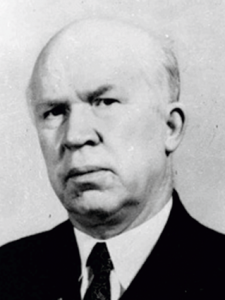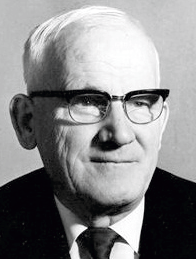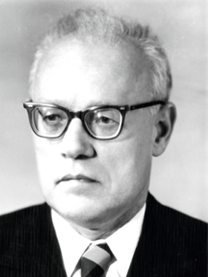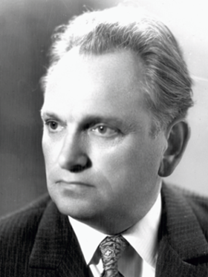The first scientific-research center of the physical and mathematical profile in the Republic of Belarus – the Institute of Physics and Mathematics of the Academy of Sciences of the BSSR – was founded on January 17, 1955. In 1959 it was reorganized into two independent establishments – the Institute of Physics and the Institute of Mathematics and Computer Engineering. The key role in the organization and development of the Institute of Physics was played by the prominent Scientists A.N. Sevchenko (first director of the Institute), B.I.Stepanov (director of the Institute of Physics from 1957 to 1985), and M.A.El’yashevich, invited to Minsk from the State Optical Institute (Leninngrad), as well as by the Belarusian physicists N.A.Borisevich and F.I.Fedorov. Under their supervision, fundamental investigations were launched on spectroscopy and luminescence of complex molecules, optics of anisotropic and scattering media, spectroscopy and diagnostics of low-temperature plasma, and physics of elementary particles. Since 1961 the major directions of scientific investigations of the Institute have been laser physics, nonlinear optics, and laser spectroscopy.
B.I.Stepanov (1913—1987) —
director of the Institute of Physics from 1957 to 1985
Academicians: A.N.Sevchenko, F.I.Fedorov, N.A.Borisevich, M.A.El’yashevich.
The Institute was growing and developing rapidly. A design-technological department was formed at the Institute in the 1960s. Soon this department grew into a legally independent establishment – the AXICON Pilot-Production Design Company. In 1970 a branch of the Institute was set up in Mogilev with integrated optics as the main line of investigations. In 1992 this branch was transformed into the Institute of Applied Optics of the Academy of Sciences of Belarus. In this year, on the basis of ten laboratories of the Institute of Physics dealing mainly with spectroscopy, luminescence, and plasma physics, the Institute of Molecular and Atomic Physics (IMAP) was formed.
For the time of activity of the Institute of Physics, a number of generally recognized results have been obtained:
-
the covariant theory of electromagnetic and acoustic waves in anisotropic media has been developed, the phenomenon of lateral displacement of a light beam as a result of total internal reflection has been discovered (F.I.Fedorov, B.V.Bokut’, A.G.Khatkevich, V.V.Filippov et al.);
-
the spectroscopy of free complex molecules has been developed, the phenomenon of stabilization – labilization of electron excitatrion of complex molecules, discovered by N.A.Borisevich and B.S.Neporent has been investigated in detail (N.A.Borisevich, V.A.Tolkachev et al.);
-
the spectral-luminescent properties of chlorophyll molecules and related compounds have been investigated in detail, the role of singlet oxygen in the photooxidation and photodestruction processes has been revealed (A.N.Sevchenko, G.P.Gurinovich, K.N.Solov’ev, B.M.Dzhagarov et al);
-
a number of methods and apparatus for investigating a plasma under laboratory and natural conditions, including movement of cosmic objects, as well as apparatus for aero-space remote spectrometry investigation of natural objects have been developed (M.A.El’yashevich, V.S.Burakov, L.I.Kiselevskii, L.Ya.Min’ko, V.N.Snopko, V.D.Shimanovich, V.E.Plyuta, B.I.Belyaev, A.A.Kovalev et al.);
-
the features of optical waveguides with anisotropic fillers and of the propagation of Gaussian beams in anisotropic media have been investigated; methods of obtaining planar, integral optical elements have been developed (A.M.Goncharebko, V.A.Karpenko, V.P.Red’ko et al.);
-
lasing have been obtained on the basis of dye solutions, the principles of designing tunable lasers, including distributed-feedback ones, have been developed and realized, a number of lasers generating in the whole visible range have been developed (B.I.Stepanov, A.N.Rubinov, V.A.Mostovnikov et al.);
-
theoretical approaches, methods and high-efficiency devices for nonlinear optical transformation of laser radiation frequency, which, in combination with solid, semiconductor, liquid, or other lasers, make it possible to obtain radiation with a gradually controlled frequency in the infrared, visible, and ultraviolet spectral ranges have been developed (P.A.Apanasevich, B.V.Bokut’, A.G.Khatkevich, N.S.Kazak, B.A.Orlovich, V.N.Belyi, S.A.Batishche et al.);
-
the physical bases of dynamic hohlography have been developed, the phenomenon of phase conjugation of light beams in four-photon interactions has been discovered (E.V.Ivakin, A.S.Rubinov, B.I.Stepanov, P.A.Apanasevich et al.);
-
a large-scale introduction of methods of atomic and molecular spectral analysis into enterprises of the Republic of Belarus has been realized; new methods of determining the properties of carbohydrates and proteins, polymer materials, flax fibre etc. have been developed (N.A.Borisevich, V.S.Burakov, R.G.Zhbankov, L.G.Pikulik, A.A.Yankovskii et al.);
-
changes in the spectral-optical characteristics of resonance media under the action of a powerful radiation and their manifestations in the processes of propagation of classical and quantum light beams have been investigated (P,A,Apanasevich, A.A.Afanas’ev, S.Ya.Kilin et al.);
-
a number of methods and laser devices for applications in physiotherapy and ophthalmology have been developed, the phenomenon of protective property of pigments of the organs of sight of the man and animals against the damage action of laser radiation and X-radiation have been discovered (B.A.Mostovnikov, G.A.Mostovnikova, G.I.Zheltov, V.A.Lapina et al.);
-
methods and apparatus for determining the characteristics of the atmosphere, water basins, and other natural and artificial media have been developed on the basis of many-sided investigations of the light scattering by different media (A.P.Ivanov, V.I.Loiko, A.P.Chaikovskii, A.P.Prishivalko, G.I.Predko, E.P.Zege, I.L.Katsev et al);
-
the physical bases of semiconductor lasers and of the nonlinear optics of semiconductors have been developed, new types of injection and streamer lasers as well as diode-pumped, optically pumped, and electron-beam-pumped lasers based on semiconductor crystals and quantum-dimensional heterostructures have been designed (V.P.Gribkovskii, V.A.Samoilyukovich, V.K.Kononenko, G.P.Yablonskii, G.I.Ryabtsev, S.V.Gaponenko, A.L.Gurskii, V.V.Parashchuk, E.V.Lutsenko);
-
original, effective approaches to the theory of field and particles have been developed and new polarization, topological, and nonlinear effects in the dynamics of micro- and macrosystems have been predicted on the basis of the vector parametrization of the Lorentz group and the method of universal equations, proposed by F.I.Fedorov (A.A.Bogush, L.M.Tomil’chik, E.V.Doktorov, O.C.Ivanitskaya, V.I.Kuvshinov, Yu.A,Kul’chitskii, Yu.A.Kurochkin, M.I.Levchuk, V.I.Strazhev, E.A.Tolkachev, A.Z.Gazizov, V.V.Kudryashov, A.F.Radyuk, L.G.Moroz, I.S.Satsunkevich et al.); a number of new devices and methods of nuclear spectroscopy have been developed E.A.Rudak, A.V.Berestov, A,M,Khil’manovich et al.).
The authors of these and other results have been awarded high prizes and decorations. Among them are two Lenin Prizes, seven State prizes of Belarus, three Prizes of the Council of Ministers of the USSR, ten Prizes of Lenin Komsomol. Three scientific workers of the Institute have been given the title of a Hero of Socialist Labour. In 1967 the Institute of Physics was awarded the Order of the Red Banner of Labor for the successes achieved in the development of physical science and in the training of highly skilled scientific personnel.
At present the Institute of Physics works in the following main directions:
-
laser physics, development and fabrication of new laser sources and systems for various applications;
-
nonlinear and quantum optics, laser spectroscopy;
-
nonlinear dynamics of complex systems;
-
physics of quantum-dimensional structures;
-
transfer of optical radiation and optics of scattering media, optical methods of investigation and diagnostics of natural objects and biological media;
-
physics of elementary particles and nuclear reactions.
An Academic Council, scientific councils on the problems of laser physics, physical optics, and nuclear physics, and two special councils considering candidate’s and doctor’s theses work at the Institute of Physics.
The Institute participate actively in the coordination and fulfillment of state programs on fundamental research and oriented fundamental and applied investigations as well as state scientific and technical programs in the field of laser physics, physical optics, and physics of elementary particles. The Institute of Physics is a founder of two international scientific journals: «Journal of Applied Spectroscopy», «Nonlinear Phenomena in Complex Systems» (published jointly with the Belarusian State University).
The main achievements of the Institute of Physics are scientific results corresponding to the word standards, which provide the high authority of the home science and determine the level of development of physics in Belarus.





